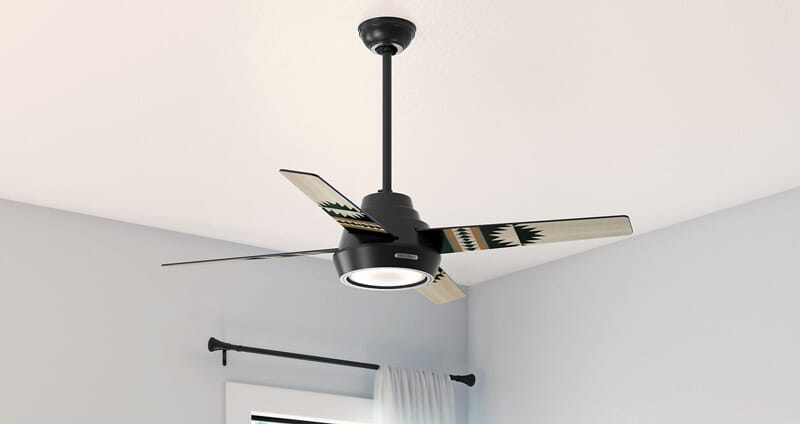How to Understand the Ceiling Fan Energy Guide

When you're in the market for a new ceiling fan, there are many important factors you need to consider. First of all, you of course need to think about the space that needs a ceiling fan: its decor style, its size and whether it is inside or outside. Those considerations can help you narrow down the wide selection of fans. But what if you're trying to decide between a few different fans and they all look good? Look to the energy guide information for some ways to find a real winner!
The ceiling fan energy guide consists of three sets of numbers that might look confusing at first glance, but we're here to help you understand these metrics so you can buy a fan that meets all of your needs. Here is what a ceiling fan energy guide looks like:

The three numbers you see in a ceiling fan's energy guide are airflow, electricity use and airflow efficiency. All of these are measured while the fan is running at high speed.
Airflow is measured in cubic feet per minute, which is abbreviated to cfm. Basically, the higher the airflow number, the more air is moving.
Note that the way air movement information is presented has changed as of 2018 thanks to new Department of Energy regulations and industry standards. Airflow data is now being presented as 1 airflow number, which is an average of the High and Low speed CFM for the fan.
Electricity use focuses on how many watts of energy it takes to operate the ceiling fan itself. The lower the number, the better. (Note: wattage doesn't measure how bright the light is.) The electricity use measurement does not include ceiling fan lights.
Airflow efficiency is what you get when you divide the airflow number by the electricity use number. The higher the airflow efficiency number, the more efficient the fan is.
You can get more air movement by increasing the fan's blade size or its running speed. But when you increase the speed, you also use more energy to operate the fan. Instead of turning up the speed, picking a fan with longer or more aerodynamically-designed fan blades is a better idea for moving more air while using less electricity. Yes, this does mean that maybe small ceiling fans are the more efficient option for your space!
Find your favorite fan based on what you want most:
- If you want a fan that will save you money on energy bills, look for one with a low electricity usage and high airflow efficiency.
- If you want a fan that will keep you very cool, look for one with a high airflow.
To save more money on energy no matter what kind of fan you want, make sure to turn off the fan if you are not in the room. Unlike HVAC systems, ceiling fans do not change the temperature of the room, so they are just wasting energy if they're being used while no one is in the room.
If you want to save even more energy while using a ceiling fan with a light kit, look for fans that use integrated LED lights or ones where you can use LED light bulbs in the light kit later.
Ready to shop? Here's our selection of indoor and outdoor ceiling fans.
Need more help? Give us a call at 1-866-688-3562.
Emma Harger-Young - Lights Online
